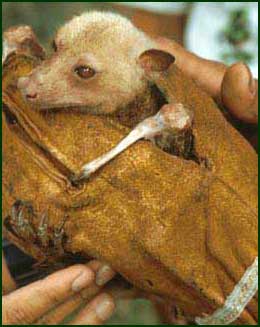Prospects for Recovery
This site is under redevelopment. Its content is from 1998, but we will be updating it in the near future.
Plotting a corrective course for a country with such severe social and environmental problems as the Philippines is an enormous challenge. The damage has been enormous, and the extent of change required to turn the system from one of approaching disaster to one of long-term stability is daunting. However, many aspects of the decline that began long ago have been reversed or at least slowed.
One of the greatest problems for decades was a paucity of accurate and current information on wildlife, forests, and the environment in the Philippines. This is changing rapidly; newspapers now avidly cover stories about floods, droughts, and deforestation, and highlight corrupt practices that come to light. Information is graduallymaking its way into grade school and high school curricula, and books about nature and wild animals and plants are being published increasingly frequently; for example, the Philippines now has the best field guide to marine mammals of any country in Southeast Asia, and the new Philippine Red Data Book is one of the first comprehensive listings of endangered species for a developing country.
When I began doing field work in the Philippines in 1981, there were perhaps a half-dozen active Filipino researchers studying wild mammals, birds, reptiles, and amphibians; at the time, therewas virtually no funding to support research, and speaking or writing about environmental issues of any sort was likely to result in harassment and intimidation, loss of employment, and occasionally worse. In 1991, with funding from the MacArthur Foundation through The Field Museum, a program of training and field research was established for young field biologists, and the Wildlife Conservation Society of the Philippines was founded. The level of interest in wildlife research has grown dramatically; attendance has gone from about 25 at the first meeting to over 175 at most recent meetings, many of the participants enthusiastic graduate students who are doing excellent field studies. The members of the society work together to conduct research, promote knowledge and training, and act as the primary conduits for getting new information about biodiversity to the public.
For some of the most severely endangered species, integrated programs of field studies and captive breeding of conspicuous flagship species have been established. Although captive breeding will never provide the stability that comes with successful protection of the natural habitat, such programs provide personal contact with endangered native species to thousands of Filipinos every year, raise consciousness about environmental problems, and keep alive the possibility of reintroducing endangered species into former habitat once conditions in the countryside improve. One of the most successful involves the Visayan spotted deer; although wild populations continue to dwindle, the captive herd is now well over 100 individuals and growing rapidly. With gradual improvement inconditions on the mountains of Negros, the prospect of release of some captive animals into the beautiful area around Lake Balinsasayao seems to be approaching rapidly. Captive breeding programs for the giant fruit bats, endangered wild pigs, and some other species are also contributing to conservation in various parts of the country. Unfortunately, the older and larger projects—especially those for the tamaraw and the Philippine eagle—remain mired in controversy and have yet to produce a positive result. In all cases, a clear emphasis on protection of wild populations ought to be the top priority, especially since these large species provide one of the best sources of public support for protection of the rain forest.
One of the most positive signs in recent years has been the rejuvenation of the system of national parks andother protected areas. During the Marcos years, none of the parks received meaningful protection, and many of the parks were partially logged by companies holding permits for logging on their boundaries; several parks were almost entirely clear-cut. Several internationally funded projects are now under way, after assessment studies that began in 1989. Beginning in 1994, the Global Environmental Facility of the World Bank provided funding for management, protection, and community development at ten sites, and in 1996 the European Union provided funding for eight additional sites (some are marine, but most are rain forest). Additional funding for similar projects has come from the Danish and Dutch governments. Equally importantly, the Philippine government has moved actively to declare new national parks and protected areas in critical regions in the last several years, including Mount Kitanglad in northern Mindanao, the mountainous cores of Sibuyan and Camiguin islands, and the Northern Sierra Madre Wilderness Park in northeasternLuzon, now the largest national park in the country. Although new parks and greatly improved protection activities are badly needed, there has been remarkable progress. One especially positive aspect of the new national park system is that it is gradually being shaped to provide protected areas in every biogeographical region in the country. The Philippines may soon be one of the first countries in the world to have a park system that is specifically designed to protect biological diversity. The primary challenges for the park system at this time are to increase coverage of the lowland dipterocarp forest, which has been most severely decimated in recent decades (both outside and inside the parks), to find constructive, effective ways of drawing poor farmers out of the parks, and to bring an end to the illegal logging that continues to go on in most of the parks.


